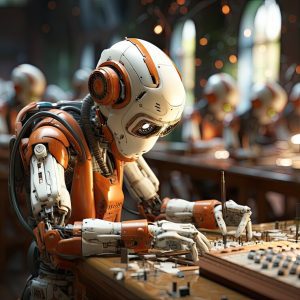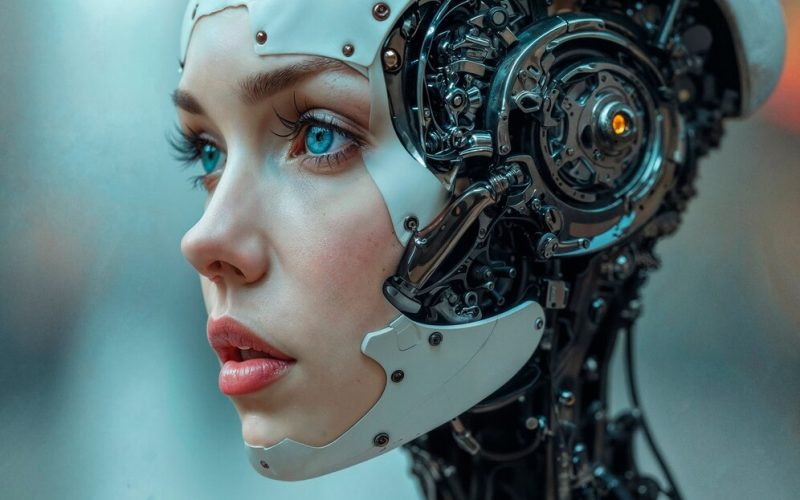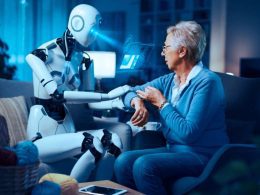Introduction
Robotics, a field at the intersection of science, engineering, and technology, has rapidly advanced over recent decades, bringing forth innovations that have reshaped industries. Robots, the main products of robotics, can now perform tasks with precision, speed, and intelligence beyond human capabilities. But what is robotics exactly, and how is it transforming the world around us? This article dives into the definition of robotics, the types of robots, and the benefits, case studies, and examples showcasing its impact across various sectors.
What Is Robotics?
Robotics refers to the science and engineering of designing, building, and using robots that substitute or replicate human actions. Robots perform repetitive and complex tasks in environments like manufacturing, healthcare, agriculture, and search and rescue, enhancing productivity and accuracy. With advancements in artificial intelligence (AI), robots now possess varying levels of autonomy, enabling them to tackle increasingly sophisticated situations. The integration of robot autonomy levels allows robots to operate independently of human control, adding versatility to their applications.
What Is a Robot?

A robot is a programmable machine designed to carry out tasks autonomously or semi-autonomously. The main components of a robot include:
- Control System: Serves as the brain of the robot, coordinating its actions.
- Mechanical Construction: Determines the robot’s physical abilities, such as movement.
- Electrical Components: Provide the robot with power.
- Software Program: Allows the robot to execute tasks based on programmed instructions.
From industrial robots on assembly lines to medical robots performing precise surgeries, robots are transforming operations across multiple industries. For instance, robots in manufacturing are enhancing efficiency by automating labor-intensive processes, while robots in healthcare are revolutionizing patient care with improved precision in surgeries.
Types of Robotics
-
Humanoid Robots:
- These robots mimic human behavior and actions. Notable examples include Sophia, developed by Hanson Robotics, and Atlas, created by Boston Dynamics. These robots can run, jump, carry objects, and even engage in conversations.
-
Cobots (Collaborative Robots):
- Cobots are designed to work alongside humans, enhancing workplace safety and productivity. With the ability to interact and collaborate with human operators, cobots are commonly used in manufacturing environments to perform repetitive tasks like packing, leaving complex tasks for human workers.
-
Industrial Robots:
- Industrial robots are a staple in manufacturing environments, automating assembly lines and handling heavy materials. An example is the robotic arm used in automotive production, which welds car parts with greater speed and precision than human workers.
-
Medical Robots:
- Medical robots assist healthcare professionals in performing surgeries and other medical tasks with precision. For instance, the Da Vinci surgical robot enables surgeons to perform minimally invasive surgeries with enhanced dexterity and control.
-
Agricultural Robots:
- Agricultural robots handle tasks such as planting, monitoring crops, and harvesting. Autonomous tractors and drones that collect data on crop health are helping farmers improve their yields and reduce labor.
-
Microrobotics:
- This field involves the study and creation of miniature robots. These robots, no bigger than a millimeter, are being used in biotech research to monitor and treat diseases at a microscopic level.
-
Augmenting Robots:
- Also known as VR robots, augmenting robots improve or replace human capabilities. Robotic prosthetic limbs or exoskeletons used to lift heavy objects are examples of how these robots are enhancing human abilities.
-
Software Bots:
- While not physical robots, software bots (or ‘bots’) perform tasks online, such as chatbots used in customer service. These bots can engage with customers, answer queries, and enhance business operations without needing physical presence.
Robotics Applications Across Industries

Manufacturing
In the manufacturing sector, industrial robots are game-changers. On automotive assembly lines, robotic arms can weld, paint, and assemble parts with unmatched speed and precision. For example, Tesla employs industrial robots to automate its car production, enhancing efficiency and consistency. The benefits of robotics in manufacturing include increased productivity, reduced human error, and improved safety.
Healthcare
Medical robots are at the forefront of the healthcare industry, assisting in surgeries, patient rehabilitation, and transporting medical supplies. A prime example is the Da Vinci robotic system, which allows surgeons to perform complex procedures with greater precision, reduced patient recovery time, and minimal scarring. Additionally, Medical Robots can offer emotional support to patients during rehabilitation, acting as companions in recovery.
Case Study: The Da Vinci Surgical Robot
The Da Vinci robot has revolutionized the field of surgery, particularly in minimally invasive procedures. In a case study involving prostate cancer surgery, the Da Vinci robot enabled surgeons to perform precise movements that would be impossible for the human hand alone. This resulted in reduced blood loss, faster recovery, and fewer complications compared to traditional open surgery.
Companion and Social Robots
Companion robots serve emotional and therapeutic purposes. These robots are often employed in the care of elderly patients or those with mental health conditions, such as dementia. For instance, Paro, a robotic seal, is used as a therapy tool to improve mood and social interaction in dementia patients. By offering companionship, social robots improve quality of life for patients and reduce the workload of healthcare professionals.
How Do Robots Work?
Robots function using a combination of mechanical, electrical, and software components. Pre-programmed robots work in controlled environments to perform simple, repetitive tasks, such as welding in an automotive factory. Meanwhile, autonomous robots use sensors and control systems to operate independently, as seen with robots used in space exploration. Teleoperated robots, such as drones, allow human operators to control their movements remotely, which is often seen in search and rescue operations.
Benefits of Robotics
- Increased Accuracy: Robots can perform movements and actions with greater precision than humans, making them ideal for industries like manufacturing, healthcare, and more.
- Enhanced Productivity: Robots can work continuously without fatigue, resulting in increased output and consistent production quality.
- Improved Safety: Robots can perform dangerous tasks in hazardous environments, such as working in extreme temperatures or handling toxic materials, reducing the risk of injury to human workers.
- Cost Efficiency: In the long run, investing in robots can reduce operational costs, especially in industries that require labor-intensive processes.
- Rapid Innovation: The integration of robotics sensors and AI allows for real-time data collection and analysis, leading to continuous process improvements.
Case Study: Tesla’s Robotic Assembly Line
Tesla has revolutionized its production line by incorporating industrial robots to assemble its electric vehicles. These robots can work faster and more accurately than human workers, assembling cars in record time while maintaining precision in every detail. Tesla’s adoption of robotics has allowed the company to scale up production, reduce costs, and set new standards in the automotive industry.
Challenges and Drawbacks
Despite the numerous benefits, there are challenges associated with the widespread adoption of robotics:
- Job Losses: Robots may displace human workers in sectors like manufacturing, leading to potential job losses.
- Data Security Risks: Robots connected to the Internet of Things (IoT) are susceptible to cyberattacks, which could compromise data security.
- Maintenance Costs: While robots improve efficiency, the maintenance costs can be high. Faulty robots can disrupt production and lead to financial losses.
- Environmental Impact: The extraction of raw materials for building robots and the disposal of obsolete parts can contribute to environmental waste.
Conclusion
Robotics is undoubtedly transforming industries, from manufacturing to healthcare. The ability to enhance productivity, improve safety, and increase accuracy makes robots invaluable assets across various fields. However, the growing reliance on robots also brings challenges like job displacement and environmental concerns. As the technology evolves, the balance between human workers and robots will continue to shift, but the future promises a world where robots and humans collaborate to achieve more than ever before.
This article provides a comprehensive overview of robotics, its components, applications, and benefits, while also addressing the potential drawbacks and challenges. Through case studies like Tesla’s robotic assembly line and the Da Vinci surgical system, we see how robots are shaping the future across diverse industries.












